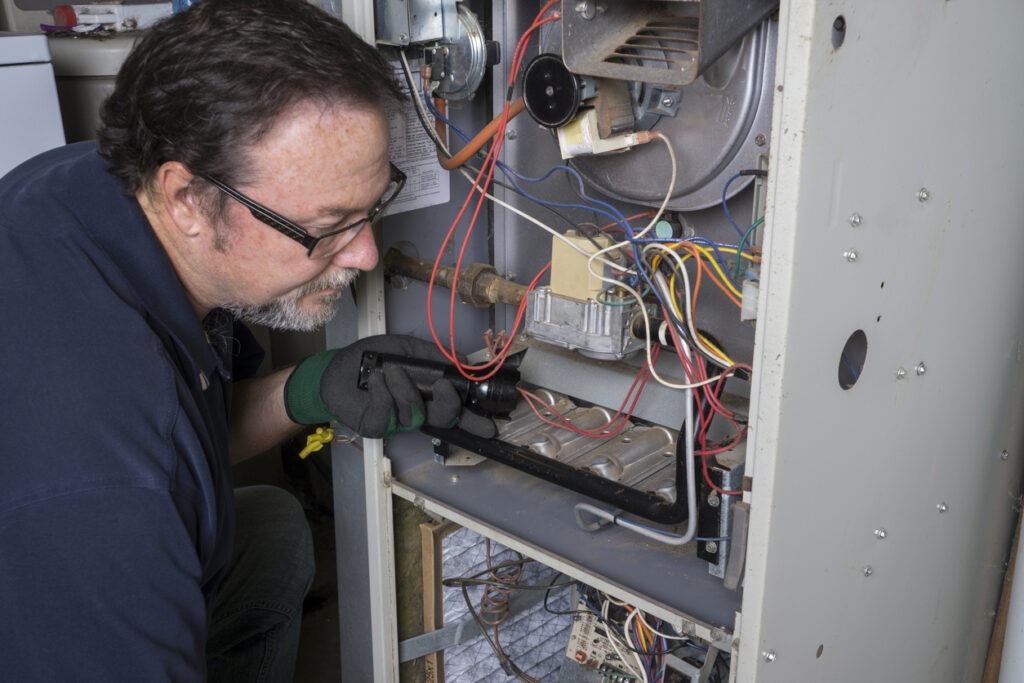While it may seem like winter is loosening it’s grip, there are plenty of cold days and nights ahead. Which means your furnace still has a job to do before spring rolls around. However, many homeowners overlook the importance of a late-season furnace inspection, figuring a year or two off is no big deal. While it’s common to prioritize pre-winter checks, a thorough examination towards the end of the heating season can unveil potential issues, enhance efficiency, and ensure your furnace is ready to hibernate until the next winter.
Let’s explore the valuable benefits of a late-season furnace inspection that often go unnoticed.
Identify and Address Wear and Tear
Throughout the winter, your furnace works tirelessly to maintain a comfortable indoor environment. By the end of the heating season, it may have endured significant wear and tear. A late-season inspection allows an HVAC professional to identify any signs of deterioration, such as worn-out components, frayed wiring, or compromised heat exchangers. Addressing these issues promptly can prevent further damage and extend the lifespan of your furnace.
Ensure Optimal Efficiency
Over time, dust and debris can accumulate in your furnace, affecting its efficiency. A late-season inspection includes a thorough cleaning of the furnace components, including the burners, blower, and air filters. Clean systems operate more efficiently, ensuring that your furnace uses less energy to generate the same amount of heat. This not only reduces your energy bills but also contributes to a more sustainable and eco-friendly home.

Prevent Unexpected Breakdowns
The last thing you want during a frigid late-winter night is a sudden furnace breakdown. A late-season inspection helps identify potential issues that could lead to malfunctions, such as faulty thermostats, ignition problems, or gas valve issues. Addressing these concerns proactively can prevent inconvenient breakdowns, ensuring that your home stays warm and cozy until the heating season officially concludes.
Optimize Indoor Air Quality
A well-maintained furnace not only heats your home effectively but also contributes to better indoor air quality. During a late-season inspection, an HVAC professional will check and clean the air filter, removing accumulated dust and allergens. Improved air quality is especially crucial during the winter months when homes are often sealed tight, and ventilation may be limited.
Uncover Hidden Carbon Monoxide Risks
Carbon monoxide leaks are a serious threat associated with malfunctioning furnaces. During a late-season inspection, a technician will check for any signs of carbon monoxide leakage, ensuring that your furnace is operating safely. Identifying and addressing potential carbon monoxide risks is crucial for the well-being of your household, as this colorless and odorless gas can be harmful or even fatal in high concentrations.
Take Advantage of Off-Peak Scheduling
Late-season furnace inspections offer the advantage of off-peak scheduling. As winter winds down, HVAC professionals are often less busy, allowing for more convenient and flexible appointment times. By booking a late-season inspection, you can avoid the rush and ensure that your furnace receives the attention it needs before technicians become inundated with pre-winter appointments.
While it’s common to focus on furnace maintenance before the onset of winter, a late-season inspection is a strategic move that provides a host of benefits. If it’s been a year or more since you’ve had your furnace inspected, contact Eagle Services today. From identifying hidden issues and preventing breakdowns to optimizing efficiency and ensuring safety, our home comfort experts can help you enjoy a warm and comfortable living space until the last days of winter and ensure a trouble-free start to the next heating season.


